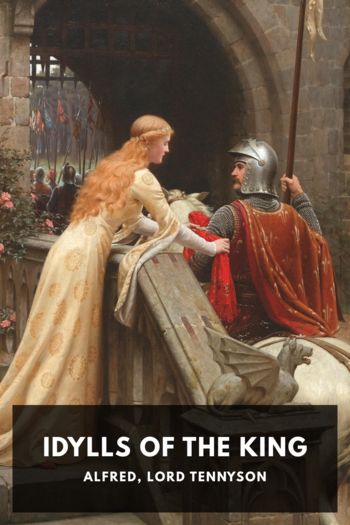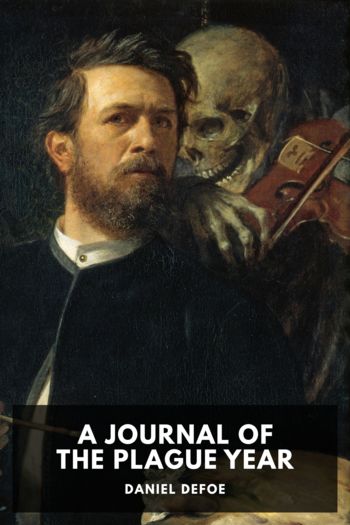Selkirk's Island, Diana Souhami [the best books to read TXT] 📗

- Author: Diana Souhami
Book online «Selkirk's Island, Diana Souhami [the best books to read TXT] 📗». Author Diana Souhami
Man, more pestilential than the rat or rabbit, is banned from living in the Reserve. Islanders are accorded what they are deemed to need. CONAF has planted fast-growing cypress and eucalyptus trees for wood for their boats and houses. They are told that ‘ecotourism’ will bring money. They are employed as park wardens. Young men replant the forests, poison the blackberry and rats and shoot the goats and rabbits.
The scheme has problems. The Island is not entire of itself. Its seas are plundered, its climate altered. When all the rabbits are killed, so too is the food supply of The Island’s buzzards (Buteo polyosoma exul). When the blackberry is all poisoned, the soil erodes, thrushes are denied their favourite food and the islanders a particular kind of pie. Like Crusoe’s God, CONAF decides what will live and what will die. There is an intangibility in wanting to keep what once was there. The Island might have the last say. Nasturtiums, poppies and amaryllis from South America and South Africa are unwelcome guests. It was not the fault of the rabbits (Oryctolagus cuniculus) that they arrived with such a capacity to reproduce and such voracious appetites, or that they erode the soil by digging burrows. They, like the cattle, goats, rats, dogs and cats, were transported on ships, then abandoned on The Island to adapt as they could.
Man’s late dream is of more than Crusoe’s market garden. It is of an image of the kind of garden the world might have been. Selkirk was a rough man and as bad and careless as others, but The Island was perforce his world. Though he longed to escape it, though he searched each day for the sail of rescue, he depended on it and was sustained by it. Three hundred years on, it is man’s privilege to leave the seals to graze, arrest erosion, restore the sandalwood trees, extend the forest, guard, protect and preserve the endemic species that net living creatures to their past, that net us all together.* In such intervention there is a dream beyond the pursuit of gold. There is deference to The Island’s grace and to a marooned man’s heart.
*They were heading for the Peruvian port of Payta, to attack ‘the King of Spain’s ships which sail from Lima to Panama with the King’s treasure’.
*She published, in 1824, a ‘Journal of a Residence in Chili, and a Voyage from Chili to Brazil in the years 1822–3’.
*The Islanders doubt that Selkirk hiked up to the Mirador every day.
*Los Cerillos airport.
*In the 1950s the rule was that lobsters must have reached a length of 15.5 cms, tail to thorax, before they could be eaten. This was reduced to 13 cms and in 2000, 11 cms. **Empanadas are a sort of pastie.
*Today there are meat pasties.
*Corporation National Forestal.
*Two sandalwood trees have escaped extinction high in the primary forest on the Yunque mountain. Perhaps from these two trees, more will grow.
ENDNOTES
Half title: Alfred, Lord Tennyson wrote Enoch Arden in the winter of 1861. It is a long narrative poem about lovers, a sea voyage, a desert island and a tragic homecoming.
2. THE JOURNEY
page number
29 An oil portrait of Dampier, c. 1698, by Thomas Murray, is now in the National Portrait Gallery, London. Hans Sloane, Secretary to the Royal Society, commissioned it. For biographical information see Anton Gill, The Devil’s Mariner (1997); B.M.H. Rogers, ‘Dampier’s Debts’ and ‘Dampier’s Voyage of 1703’, Mariner’s Mirror, 25 (1924); Joseph Shipman, William Dampier: Seaman-Scientist (1962); Glyn Williams, The Great South Sea (1997).
29 See (and following) Dampier’s published journals: A New Voyage Round the World (1697); A Collection of Voyages I-IV (1729) and John Masefield (ed.), Dampier’s Voyages (1906).
31 See Glyn Williams, The Prize of All the Oceans (1999), an account of Lord Anson’s quest for the Manila galleon.
33 See William Dampier, Voyages and Descriptions, vol. II (1699).
36 Papers relating to Dampier’s court martial in 1702 are in the Public Record Office, London (Adm.I/1692).
36 Dampier to the Admiralty. Abridged in John Masefield (ed.), Dampier’s Voyages, (vol. II).
36 Meangis is one of the remote Sangihe and Talaud islands, in the Celebes Sea, between Sulawesi and the Philippine island of Mindanao.
37 From Dampier’s manuscript journal (Sloane MS 3236 f.203v). Hans Sloane acquired this and many other buccaneers’ journals. They now form the Sloane Collection at the British Library.
38 This poster, with similar advertisements, is in the Manuscripts collection in the British Library (552 d.18 (2)).
38 See Prince Giolo Son of the King of Moangis or Gilolo: Lying Under the Equator in Long. of 152 Dig. 30 Min. a Fruitful Island Abounding with Rich Spices and Other Valuable Commodities (1692), and Thomas Hyde, An Account of the Famous Prince Giolo (1692).
39 Basil Ringrose, Bucaniers II, British Library (Sloane MS 48 f.86).
40 Dampier, A New Voyage Round the World.
40 See Bucaniers II, British Library (Sloane MS 48 f.87); Glyn Williams, The Great South Sea; and Burg, B.R., Sodomy and the Pirate Tradition (1984).
42 See John Masefield (ed.), Dampier’s Voyages (vol. I).
43 Translated in R. L. Woodward, Robinson Crusoe’s Island: A History of the Juan Fernandez Islands (1969).
45 See ‘Letters and Papers Relating to the Voyage of the St George’, in John Masefield (ed.), Dampier’s Voyages (vol. II); and B.M.H. Rogers, ‘Dampier’s Voyage of 1703’, Mariner’s Mirror, 15





Comments (0)